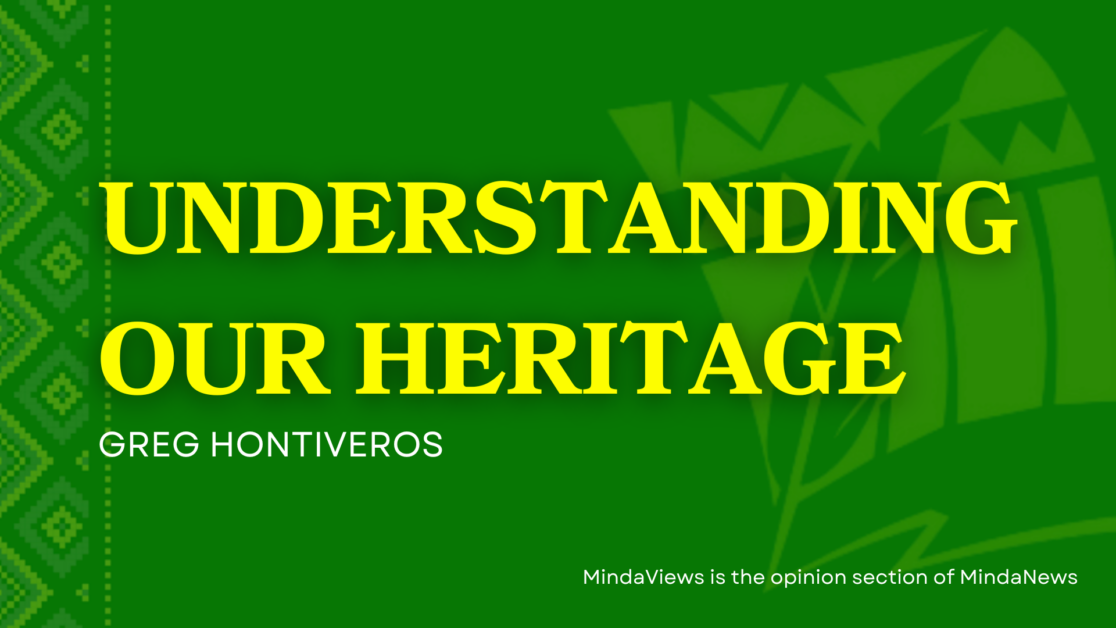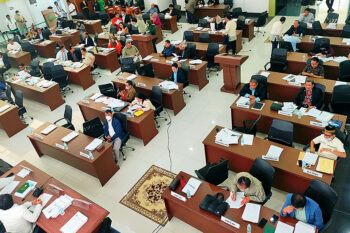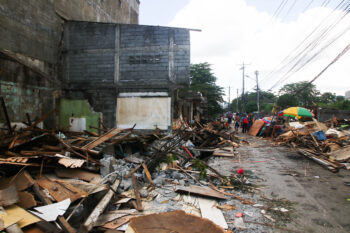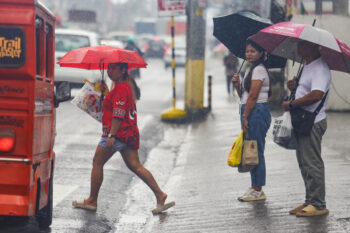
The Earliest Recorded Trade Mission to the Chinese Empire from the Philippine Islands (3)
The Allure of Gold
Last of a three-part series
It was a sweet spot – between the 9th and 11th latitude N – where early Spanish explorers would first behold the Philippine archipelago. Riding the north equatorial current of the North Pacific Gyre, that predominant ocean current that circulates on a clockwise direction between the Americas and Asia at the northern half of the world’s largest ocean, they’ll have a view of the Samar-Leyte landmsss at starboard, and the Diwata cordillera along Mindanao’s Pacific seaboard at portside.
In the Age of Sail, explorers were sensitive to ocean currents as it determined success or failure in their enterprise. It was the peerless navigator turned Augustinian monk, Andres de Urdaneta, pilot of both the Villalobos and Legazpi expeditions, who devised the return trip (tornaviaje) by riding the Kuroshio Current from the Philippines to Japan, before turning east towards the Americas. From then on, this route became the busy highway that the Galleon Trade exploited. A reluctant Urdaneta in the Legazpi expedition, which marked the formal colonization of our country, finally had his wish followed to return to the silence of the monastery in Mexico.
Aware that they were barely 500 nautical miles north of the Spice Islands, the early explorers continued to lay the strategic groundwork for the eventual grab of the Spice Islands from the Portuguese, and they saw eastern Mindanao as a jump-off point for this endeavor. Their queries told of a gold industry in the island.
The Magellan expedition encountered the two brother-rulers of Mazaua and Butuan, and the haggling for gold and metal implements between the crewmen and the locals. Antonio Pigafetta, the expedition chronicler, described the paramount ruler Calambu: “In the island of that king who came to the ship are mines of gold, which is found by digging from the earth pieces as large as walnuts and eggs. And all the vessels he uses are likewise of gold as are some parts of his house which was well-fitted in the fashion of the country… he had two large gold rings hanging from his ears… At his side he had a dagger and all of gold… His island is called Butuan and Calagan.” [Yale Codex]
[And from the Ambrosian Codex, we add: “He had three spots of gold in every tooth.”]
This depiction of the rulers and their locale is echoed in subsequent explorations:
The Villalobos expedition report of 1543 noted the valued possessions of the people in Mindanao: “…a quantity of porcelain, some bells which they esteem highly in their festivities, perfumes of musk, amber, civet, officinal storax, and aromatic and resinous perfumes.” Further, the report observed that Mindanao had three provincial jurisdictions: “…the first is Mindanao [Maguindanao] and it has gold mines and cinnamon; the second is Butuan which has the richest mines of the whole island; and the third Bisaya [probably Davao territory], likewise possessing gold mines and cinnamon. Throughout this island are found gold mines, ginger, wax, and honey.”
The Legazpi expedition reports of 1565 contained the following: “The specimens of gold, cinnamon and wax were found in a port called Butuan.” [Guido de Lavezares, Treasurer of the Fleet]
“Much gold is found in the island of Vindanao, in the districts of Butuan, Çurigao and Parasao. It is said that much gold is mined there and that it is the loftiest of all these islands.” [Andres de Mirandaola, King’s Agent]
The Portuguese in nearby Moluccas, the fabled Spice Islands, knew of Mindanao, as a page in Gabriel Rebelo’s Historia das Ilhas de Maluco would note in 1561, well before Legazpi formally colonized our country: “The archipelago of Celebes lies to the east [sic] of Molucca; and it seems like it has a large number of islands; starting with the large island called the Celebes, where there are many kingdoms, and cattle, buffalo, goats and other resources, and ending with Çebu and Matão, next to Mindanao and even beyond this there are a multitude of unknown islands. In many parts of this archipelago there is reputed to be much gold, both mined and panned from the rivers, particularly in the island of Maçagua and in the creek leading to Butuan and Mindanao where there is more of good quality and also cinnamon; and in the island of Soluquo, large pearls…”
By the time that the Jesuit missionaries consecrated the first church in Mindanao in 1597, the Spaniards have confirmed Butuan’s lost grandeur as a trading harbor for gold and realized that they came late for the party. There was still substantial gold to get by, and an account by Fr. Francisco Colin, the Jesuit superior in the Philippines at that time and who wrote the Labor Evangelica (1663), a history of the Jesuit mission, is instructive: “The best-known (marketplace for gold) seems to have been Butuan. That’s why in Book III, Ch. 13, we mentioned how our first missionaries to preach the Gospel there, still found traces of that. The local chief, Silongan, told them that after Butuan had been occupied… the first Spanish captain to whom these Indios have been given in encomienda, after the tribute in gold had been collected, had told his father who was still the chief, to send some samples to the captain-general and the governor of Manila. The pagan agreed with this and ordered two bamboo tubes of one-half fathom length… one to be filled with gold dust, the other with worked gold in the form of necklaces made of different kinds of rings linked together.”
Indeed, all these data should not lie hidden in the archives. Butuan gradually became a shadow of its old self, overtaken by Manila, Cebu, and Sulu. Not until the vast discoveries starting in 1975. History has a way of waking us up from our stupor.
But here’s a much earlier story that provided the impetus for the search for gold to the farthest east by the Indian Empire and the numerous Indianized states of Southeast Asia. In the Roman Empire, at a time when Christ the Messiah emerged at the Holy Land, the new emperor, Vespassian, had to check the decadence and excesses of Nero, and the chaos of the 3 transitional emperors, and the addiction of the upper classes for aromatics, spices, silk, ivory, cotton, exotic pets, and rare gems from the fabled East. The gold reserves of the Roman Empire had depleted fast to pay for these luxuries, and to the chagrin of Indian merchants, the Romans took to paying them with gold coins diluted with copper.
Vespassian earned great renown as the builder of the Colosseum, the Forum and the Roman Temple. And he would forever be linked to the destruction of the Second Jewish Temple in Jerusalem and the exile of the surviving Jews to all corners of his empire. As for the problem of the depleted gold reserves, Vespassian banned trade with India outright.
To sate their desire for gold, India decided to look east. After a long quest, gold in enormous quantities began to be available. Malacca at the Malay Peninsula grew to be Southeast Asia’s largest trading emporium. India took to calling the gold sources in the east as Suvarnabhumi (land of gold). The empires in the west mythically saw these lands of gold, and the Greco-Roman geographer, Ptolemy, called it the Aurea Chersonese (golden peninsula).
The Malay Peninsula came to be known as the Golden Chersonese. But geologically, the place did not yield gold at all. The real sources lay further east, in those unknown islands. Some areas have clearly been laid out as sources of gold, as in places like Sumatra. Here, at the outer margins of Southeast Asia lie the world’s largest archipelago, the thousands of islands that became a remnant of a drowned continent called the Sundaland. The bulk of these eventually became part of Indonesia and the Philippines, and some sections to Malaysia. By all indications, those gold sources lay hidden during those times.
The science of geology should finally yield the truth. Anecdotally, Dr. Florina Capistrano-Baker felt lucky to have a father who was once the country’s chief at the Bureau of Mines. Her old man, in her telling, compiled a comprehensive mineral reservation map of the country. The Diwata mountain range, the cordillera that spans the Pacific seaboard of Mindanao, was shown to have the country’s largest gold reserve.
A quick look at the map should show that the eastern slope of the Diwata range is now shared by the provinces of Surigao del Norte, Surigao del Sur, and Davao Oriental. At its western slope are the provinces of Agusan del Norte, Agusan del Sur, and Davao de Oro.
In the ancient past, gold was easily extracted from the rivers. In the eastern slope, the largest river with its source in the Diwata is Tago River. It is no accident that the most fascinating collection that is the golden hoard called the Surigao Treasure was found along this waterway in Magroyong. The original owners must have lived somewhere in that vicinity, and must have come under constant attack from outside enemies. Those who hid this treasure must not have survived the attack or became captives. It was a major source of frustration of the archaeologists that no native graveyard along the eastern slope was known to yield gold ornaments or any kind of artifact that could provide an insight on the lives of the people during those times.
The numerous tributaries along the western slope would join the main stem of the Agusan River that runs roughly parallel to the mountain range. The long-term gradual erosion of the mountain range would dump the gold-laden gravel on these river-beds.
If the rivers were the major sources of gold in ancient times, in our time huge equipment would destroy whole mountainsides, and tunnels would bore holes underneath. Nothing is more destructive in an era of climate change than this, and downstream farmlands get silted and water sources destroyed permanently. This method has largely been concentrated in the eastern slopes of the Diwata by large mining firms. The western slope has not escaped from this, although done by thousands of small miners in Diwalwal and Pantukan.
It remains a mystery on when Butuan and the whole northeastern Mindanao really started exploiting its gold resources. What is clear is that its peak coincided with the rise of the Sri Vijayan Empire in Sumatra, the kingdom of Champa in Vietnam, and the Sung Dynasty in China. It sent the tribute mission to China at the start of the 11th century, and accumulated the bulk of Sung ceramics on a scale unrivalled in the rest of the country, but acquired far smaller amounts of the later Ming ceramics. Another insight on the rise of Butuan could be found in the carbon-dating of the Butuan boats: a review of the carbon-dating of the boats would yield the period of the 8th century.
The National Museum archaeologists were able to recover tools in gold-smithing and to examine native graveyards that yielded proof of gold ornaments and Oriental ceramics. Chief archaeologist Wilfredo P. Ronquillo believes that “metal working was a specialty in the Butuan area” and also “glass bead working and reworking.” He cited as material evidence the more than 100 intact clay crucibles; worked stone and clay gold-melting discs; gold-smithing wooden tools shaped as pincers, picks and knives; iron, bronze, lead and gold objects; lead wastes and iron slags; and worked and reworked gold fragments which were discovered. The presence of a large number of clay crucibles in one place suggests an ancient industrial site where gold-smithing and metalworking huts abound.
The foregoing serves as a prelude to prepare us to properly situate and to appreciate the Philippine Ancestral Gold permanent exhibit at Ayala Museum. Its unearthly artistry gives one a soaring feeling of pride. What we are seeing is the apotheosis of art of our nation, a wonderful legacy handed down by our ancestors.
In the professional judgment of Dr. John Miksic, one of the top archaeologists working in Southeast Asia:
“The Ayala Museum’s Philippine Ancestral Gold Collection is perhaps the
country’s greatest tangible asset and can stand comparison with any assemblage of gold artifacts in the world.”
(Greg Hontiveros of Butuan City is an independent researcher on historical studies. Hontiveros has two published books and a dozen papers published in the Journal of History and some university journals. His focus is on aspects of Mindanao history and culture).
Reference:
G. Hontiveros, Butuan of a Thousand Years (2004)







